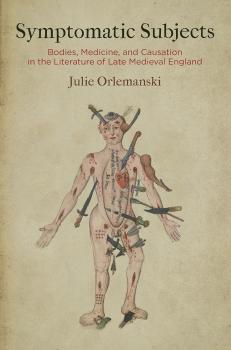ТОП просматриваемых книг сайта:
Alembics: Penn Studies in Literature and Science
Скачать книги из серии Alembics: Penn Studies in Literature and ScienceАннотация
In the period just prior to medicine's modernity—before the rise of Renaissance anatomy, the centralized regulation of medical practice, and the valorization of scientific empiricism—England was the scene of a remarkable upsurge in medical writing. Between the arrival of the Black Death in 1348 and the emergence of printed English books a century and a quarter later, thousands of discrete medical texts were copied, translated, and composed, largely for readers outside universities. These widely varied texts shared a model of a universe crisscrossed with physical forces and a picture of the human body as a changeable, composite thing, tuned materially to the world's vicissitudes. According to Julie Orlemanski, when writers like Geoffrey Chaucer, Robert Henryson, Thomas Hoccleve, and Margery Kempe drew on the discourse of phisik —the language of humors and complexions, leprous pustules and love sickness, regimen and pharmacopeia—they did so to chart new circuits of legibility between physiology and personhood. Orlemanski explores the texts of her vernacular writers to show how they deployed the rich terminology of embodiment and its ailments to portray symptomatic figures who struggled to control both their bodies and the interpretations that gave their bodies meaning. As medical paradigms mingled with penitential, miraculous, and socially symbolic systems, these texts demanded that a growing number of readers negotiate the conflicting claims of material causation, intentional action, and divine power. Examining both the medical writings of late medieval England and the narrative and poetic works that responded to them, Symptomatic Subjects illuminates the period's conflicts over who had the authority to construe bodily signs and what embodiment could be made to mean.
Аннотация
The seventeenth and eighteenth centuries in Britain saw the proposal of so many endeavors called «projects»—a catchphrase for the daring, sometimes dangerous practice of shaping the future—that Daniel Defoe dubbed his era a «Projecting Age.» These ideas spanned a wide variety of scientific, technological, and intellectual interventions intended for the betterment of England. But for all the fanfare surrounding them, few such schemes actually materialized, leaving scores of defunct visions, from Defoe's own attempt to farm cats for perfume, to Mary Astell's proposal to charter a college for women, to countless ventures for improving land, streamlining government, and inventing new consumer goods. Taken together, these failed plans form a compelling alternative history of a Britain that might have been. The Wreckage of Intentions offers a comprehensive and critical account of projects, exploring the historical memory surrounding these concrete yet incomplete efforts to advance British society during a period defined by revolutions in finance and agriculture, the rise of experimental science, and the establishment of constitutional monarchy. Using methods of literary analysis, David Alff shows how projects began as written proposals, circulated as print objects, spurred physical undertakings, and provoked responses in the realms of poetry, fiction, and drama. Mapping this process discloses the ways in which eighteenth-century authors applied their faculties of imagination to achieve finite goals and, in so doing, devised new ways of seeing the world through its future potential. Approaching old projects through the language, landscapes, data, and personas they left behind, Alff contends this vision was, and remains, vital to the functions of statecraft, commerce, science, religion, and literature.
Информация о книге
Автор произведения David Alff


